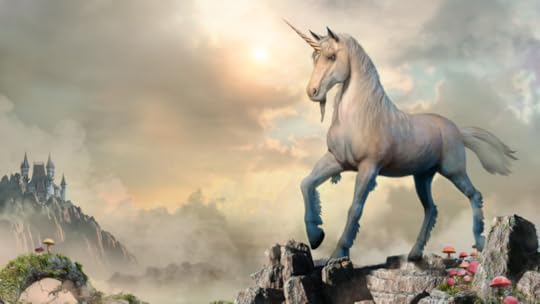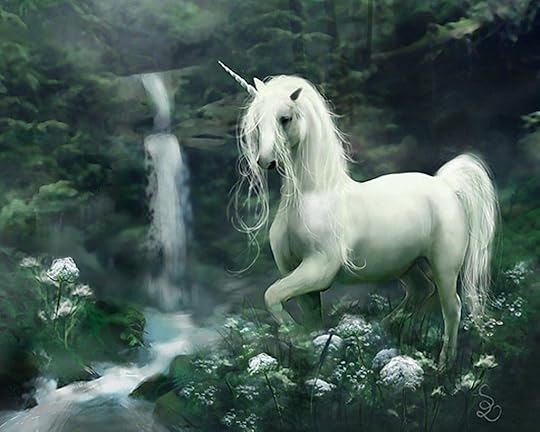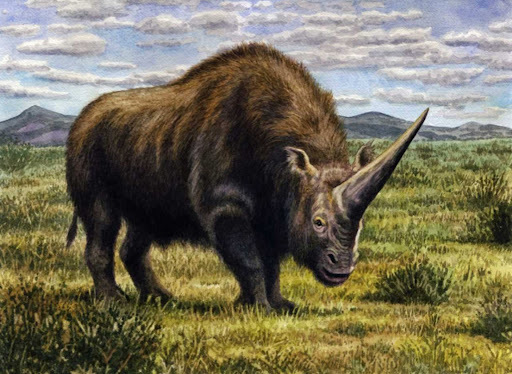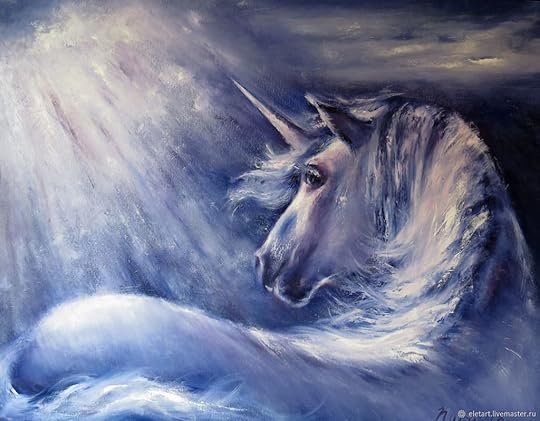The Unicorn

The unicorn is a legendary creature that has been described since antiquity as a beast with a single large, pointed, spiraling horn projecting from its forehead. It appeared in early Mesopotamian artworks and was referred to in ancient myths of India, China, and Greece. Those who drank from its horn were thought to be protected from epilepsy and poison. But what inspired this beautiful myth?

Biblical passages refer to a strong and splendid horned animal called re’em. This word was translated into “unicorn” meaning single horn or wild ox. The unicorn was interpreted allegorically in the early Christian church. The unicorn was considered a strong, fierce animal that could only be caught if a virgin maiden was placed before it. The unicorn would be attracted the woman, who would then suckle the animal and lead it to the king. Medieval writers likened this to the virgin birth of Christ.
If we look as the different translations of the word re’em. We can start to see where the myth began. One translation of Hebrew word re’em is rhinoceros.

Early paintings and writings of the unicorn talk of a large, broad backed beast with a horn in the middle of its forehead. This is a far cry from the gracile beasts we think of them today. However, the skeleton of an extinct rhino called Elasmotherium could easily have been the inspiration for the ancient unicorn.
Elasmotherium lived through the last Ice Age. Its remains are found throughout China, the Caucasus, and Central Asia – where many of these myths originated. It was the size of a mammoth and had a large single, thick horn on its forehead. This large creature was herbivorous.
Today, people in Asian cultures use rhino horns for a number of medicinal purposes, including treating hangovers, aphrodisiacs, and even honoring terminally ill relatives. The properties of the rhino horn have gained almost magical properties. It would stand to reason that this tradition began much earlier when their rhinos were called unicorns.

Another animal that is commonly attributed with the creation of the unicorn myth is the narwhal. Narwhals are medium-sized toothed whales that possess a large protruding canine tooth or “tusk.”
It lives year-round in the Arctic waters around Greenland, Canada, and Russia. The scientific name of the narwhal is Monodon monoceros meaning One-tooth One-horn. The common name is derived from the mottled coloring; Narwhal meaning “corpse whale.”
The long tusk projects from the left side of the upper jaw and forms a left-handed helix spiral. It can grow up to 3 m. This tusk is hollow and can weigh up to 10 kg. While the purpose of the tusk today is not known, it is speculated that is was used for mating displays and to create a nonviolent assessment of hierarchical status. In 2006, narwhals were also seen tapping and stunning cod before feeding on them.
Quacks in Medieval times up through the 1900’s would grind up narwhal tusks claiming it had the magical properties of unicorns. It was used to neutralize poison and cure depression. Vikings and other traders were able to sell them for many times their weight in gold. This contributed to their threatened status until 1996. Now, their population is estimated to be around 170,000 animals world wide and are classified as near threatened.

Unicorns are a beautiful myth. Their supposed magical properties have caused real life repercussions to two different groups of animals looking for its elusive magical power. These animals are as fascinating and magical as the unicorn. We need to work together to keep them from turning into their own myth.
Sources:
Lowry, L; Laidre, K; Reeves, R (2017). “Monodon monoceros“. IUCN Red List of Threatened Species. 2017.
Linnaeus, C (1758). Systema naturae per regna tria naturae, secundum classes, ordines, genera, species, cum characteribus, differentiis, synonymis, locis.
Heide-Jørgensen, M. P. & Laidre, K. L. (2006). Greenland’s Winter Whales: The beluga, the narwhal and the bowhead whale. Ilinniusiorfik Undervisningsmiddelforlag, Nuuk, Greenland.
Fischer, G. (1809). “Memoires de la Société Impériale des Naturalistes de Moscou”. Tome II. Moscou: Imprimerie de l’Université Impériale: 255.
Schvyreva, A.K. (August 2015). “On the importance of the representatives of the genus Elasmotherium (Rhinocerotidae, Mammalia) in the biochronology of the Pleistocene of Eastern Europe”. Quaternary International. 379: 128–134.
Kosintsev, Pavel; et al. (2019). “Evolution and extinction of the giant rhinoceros Elasmotherium sibiricum sheds light on late Quaternary megafaunal extinctions”. Nature Ecology and Evolution. 3 (1): 31–38.
“Numbers 23:22 – Bible Gateway”. http://www.biblegateway.com.



